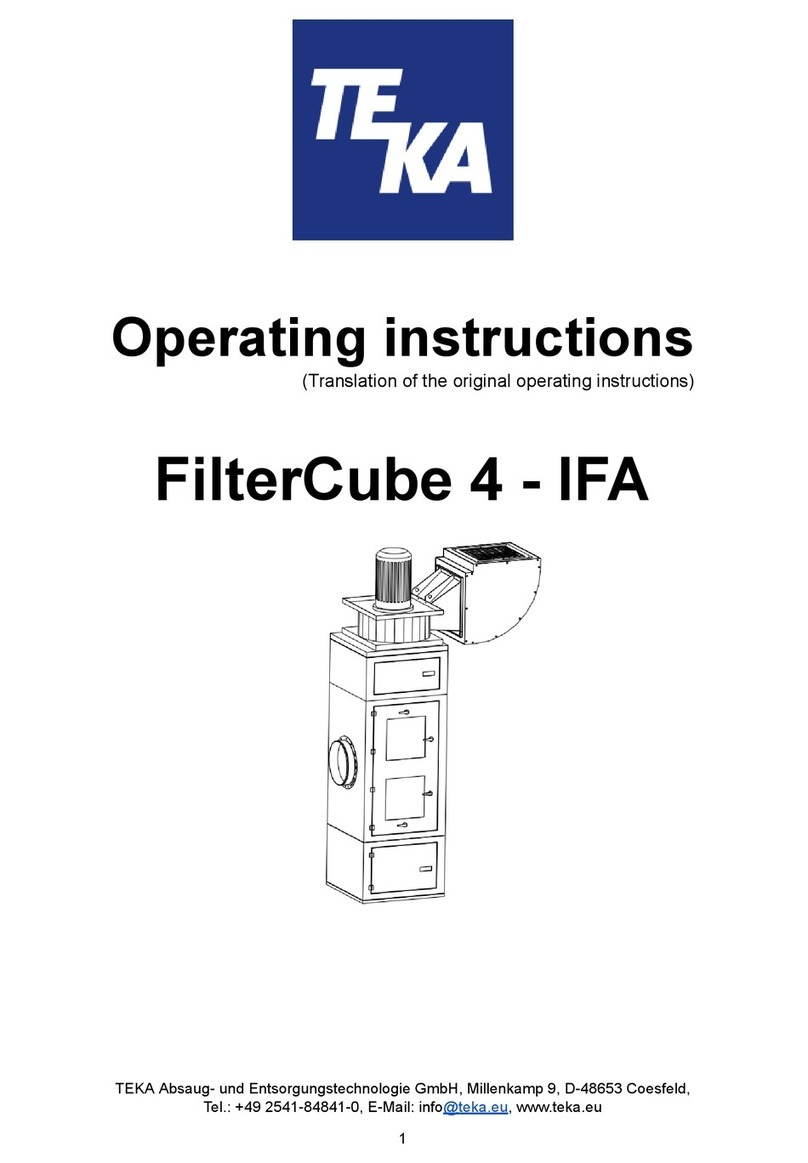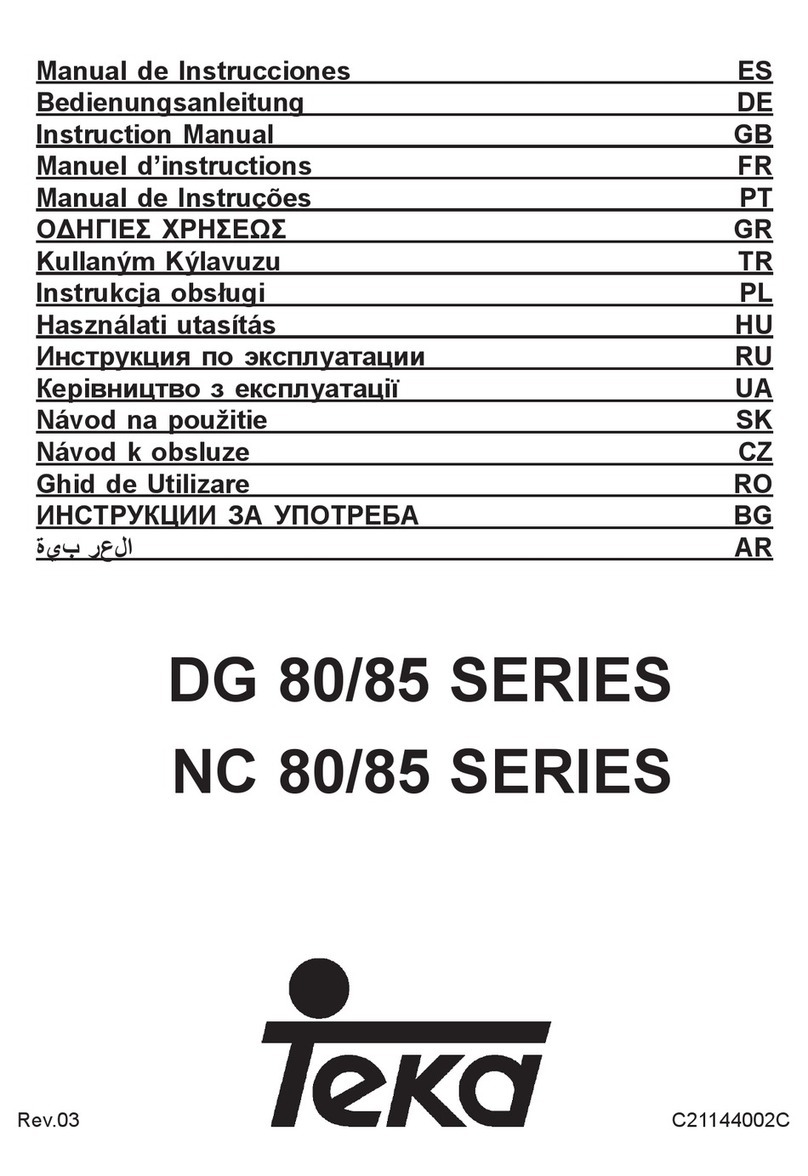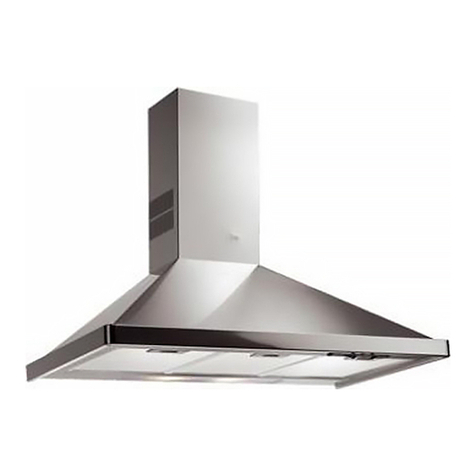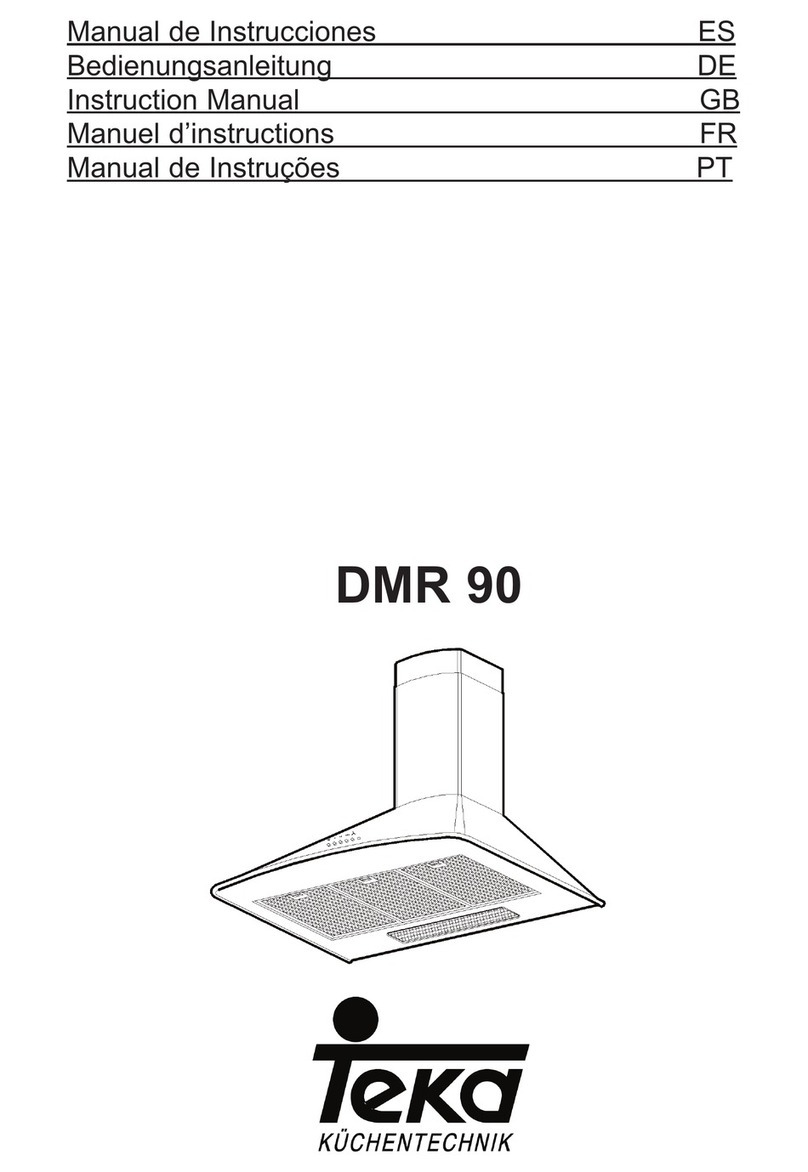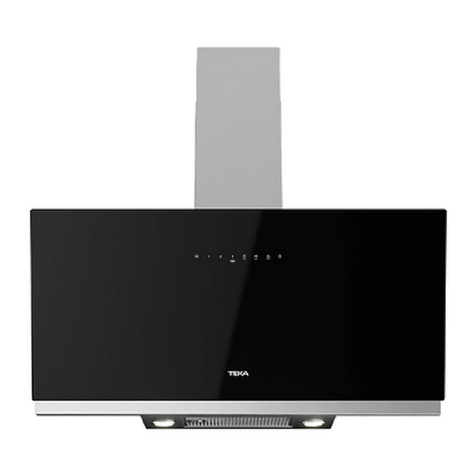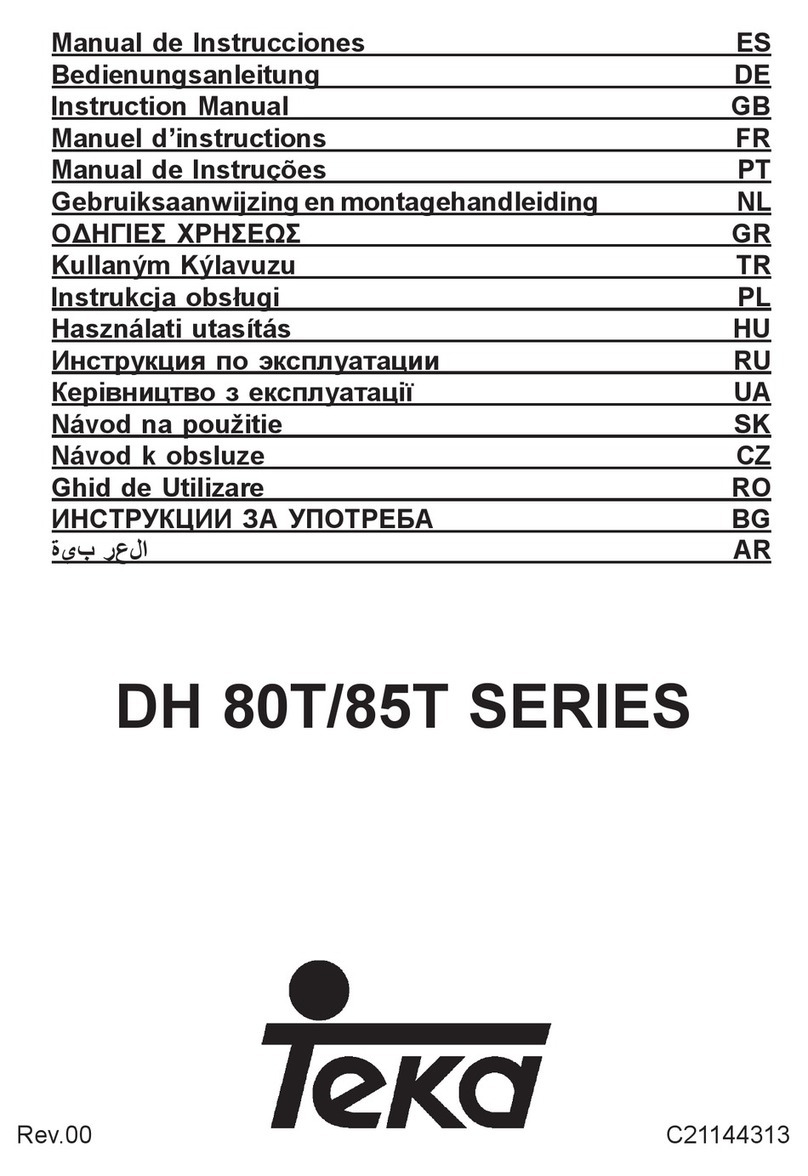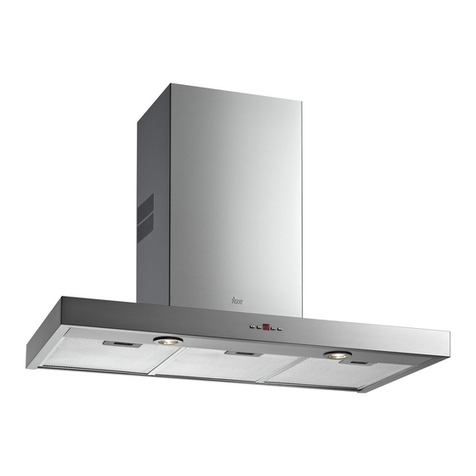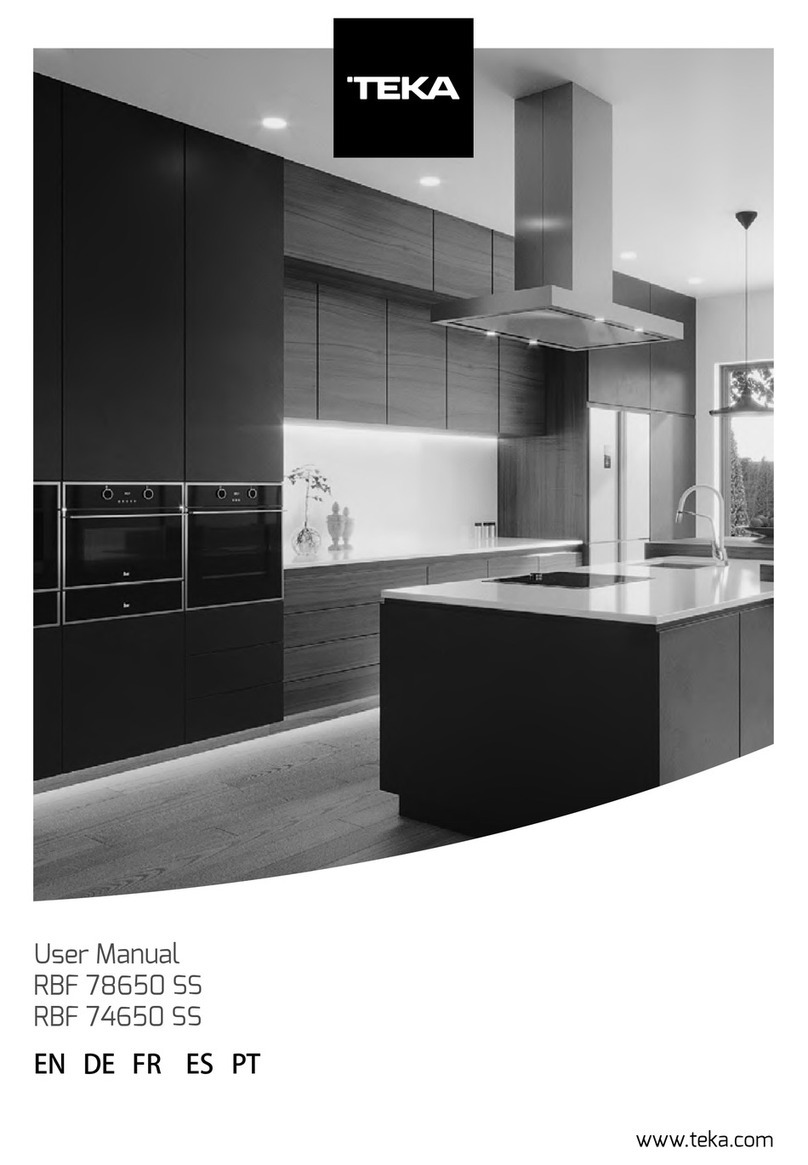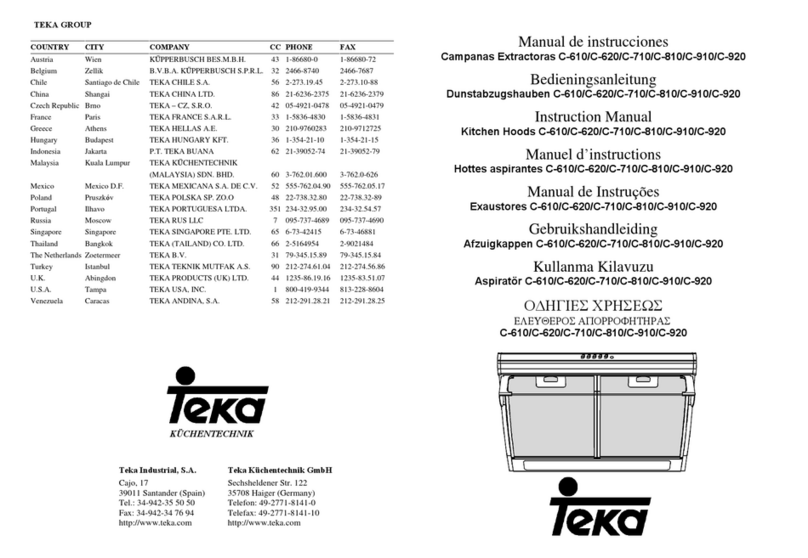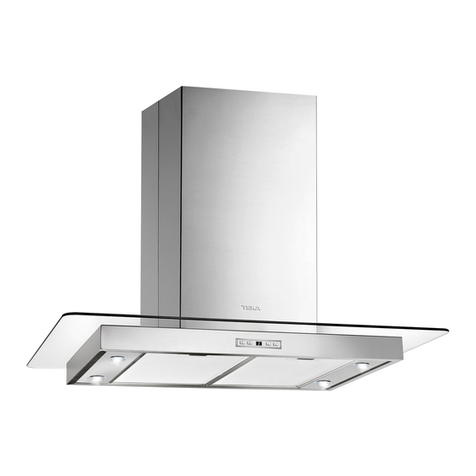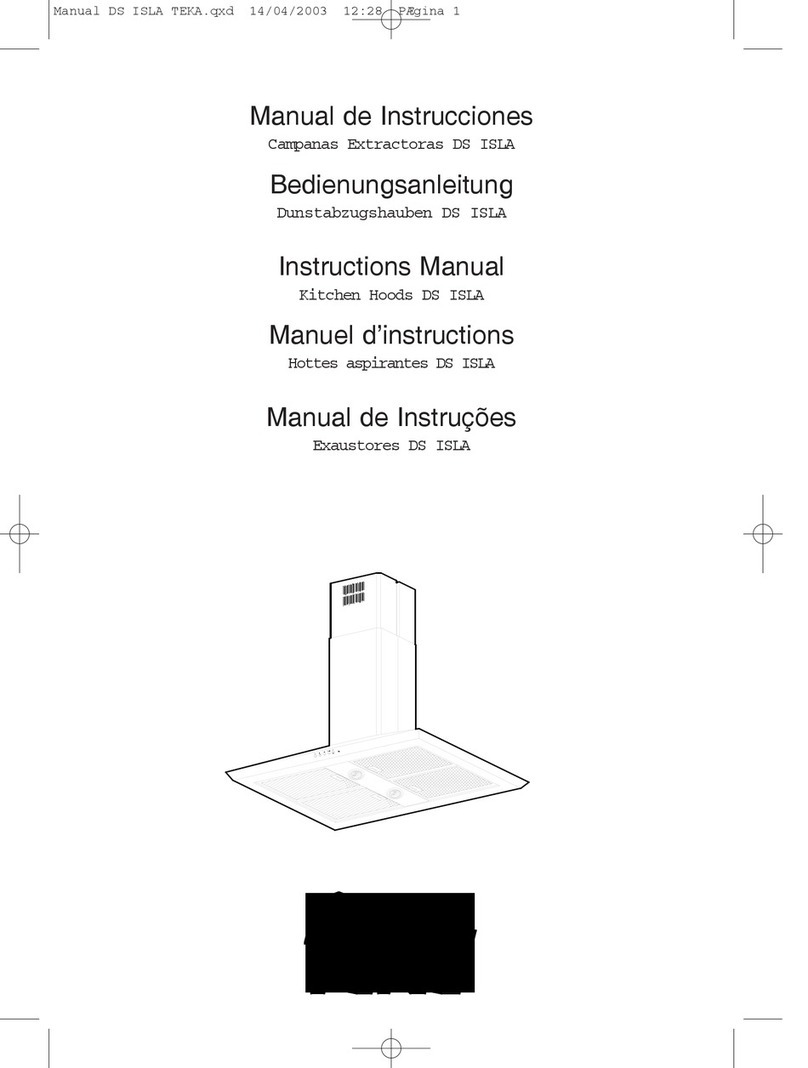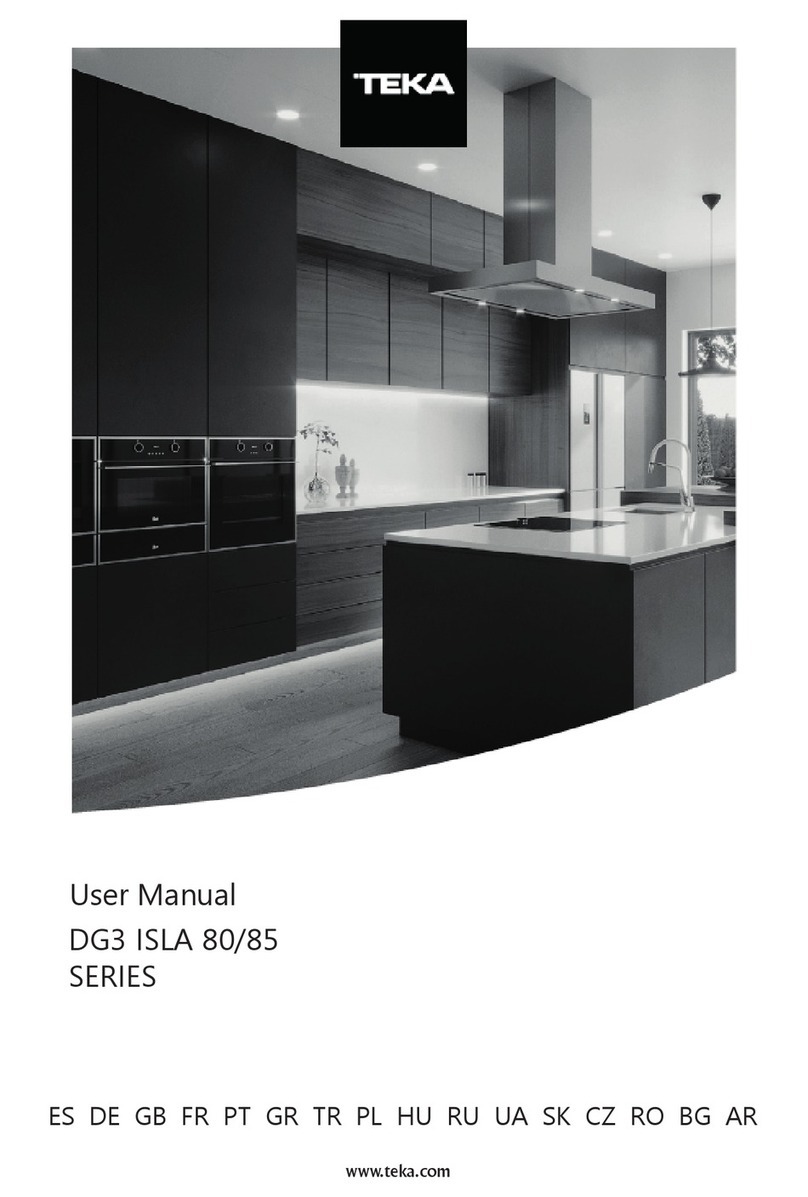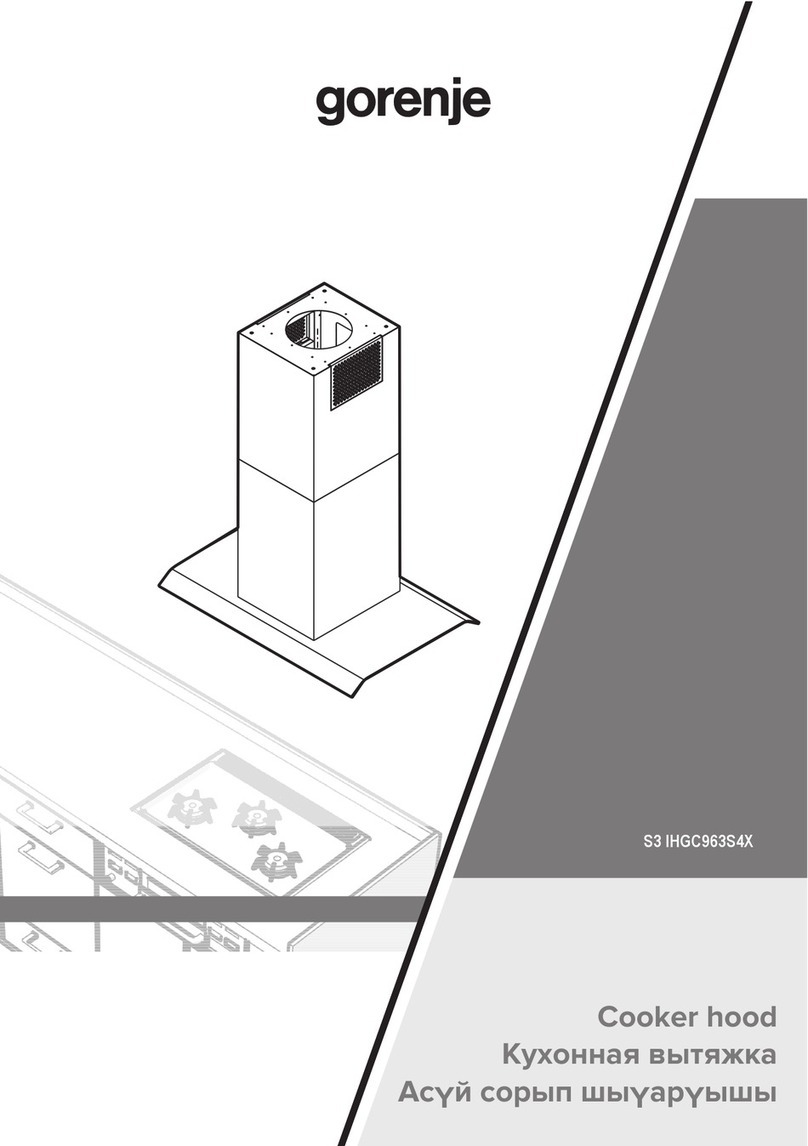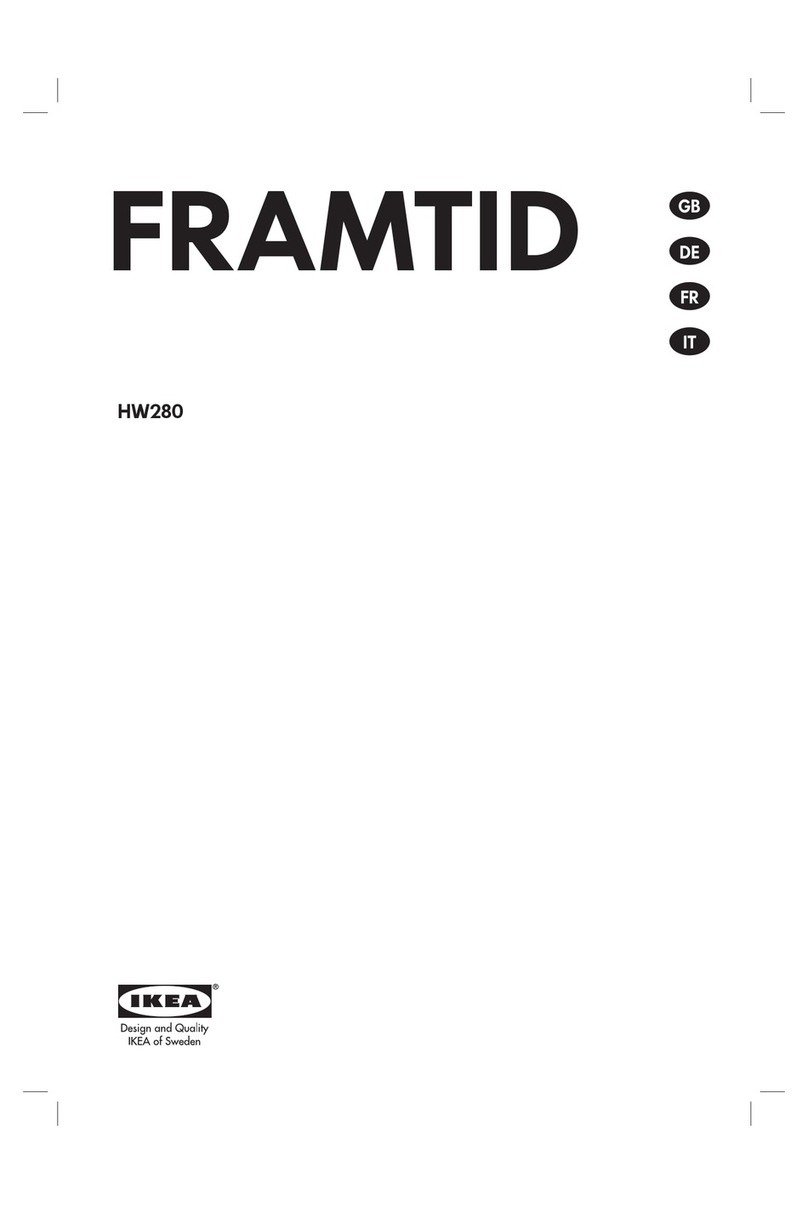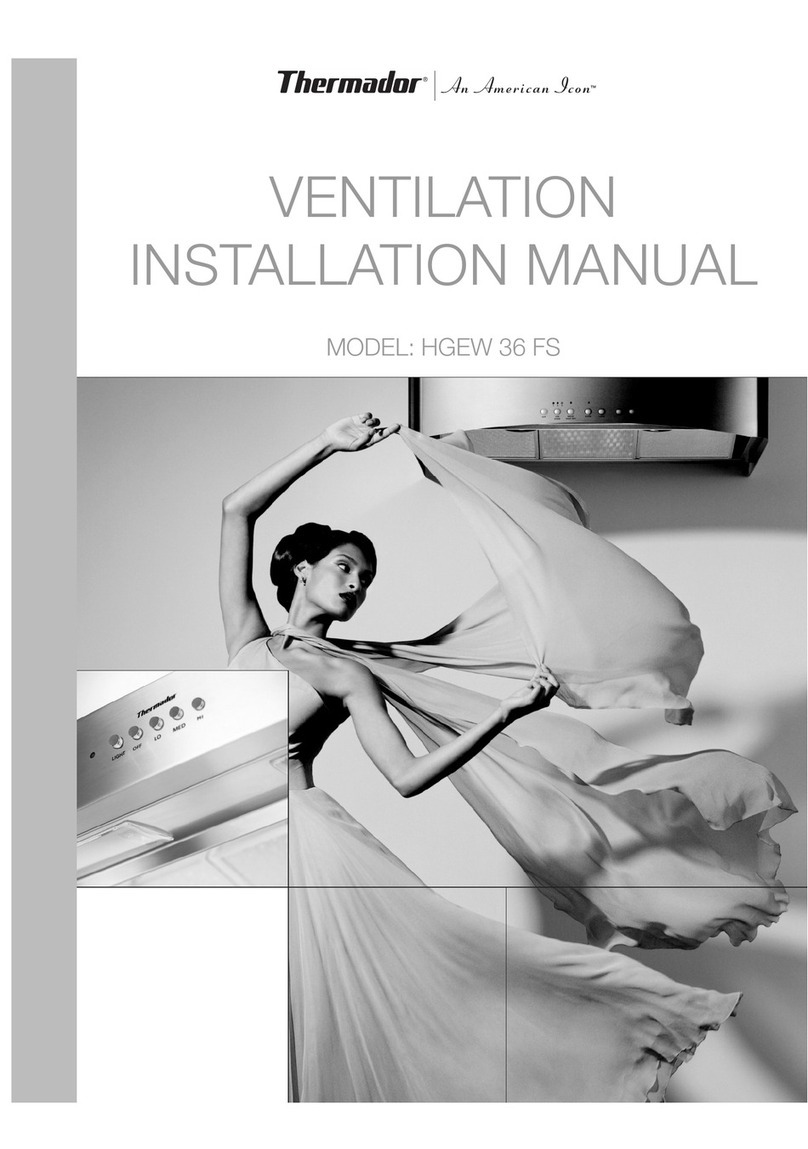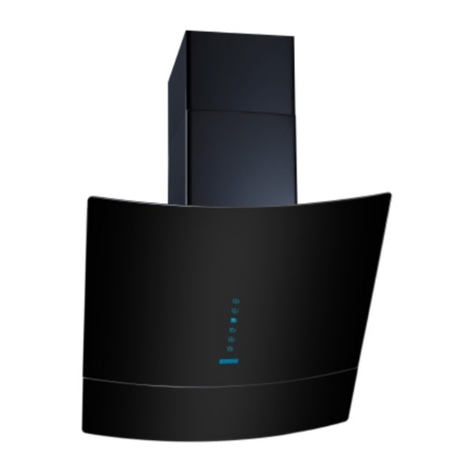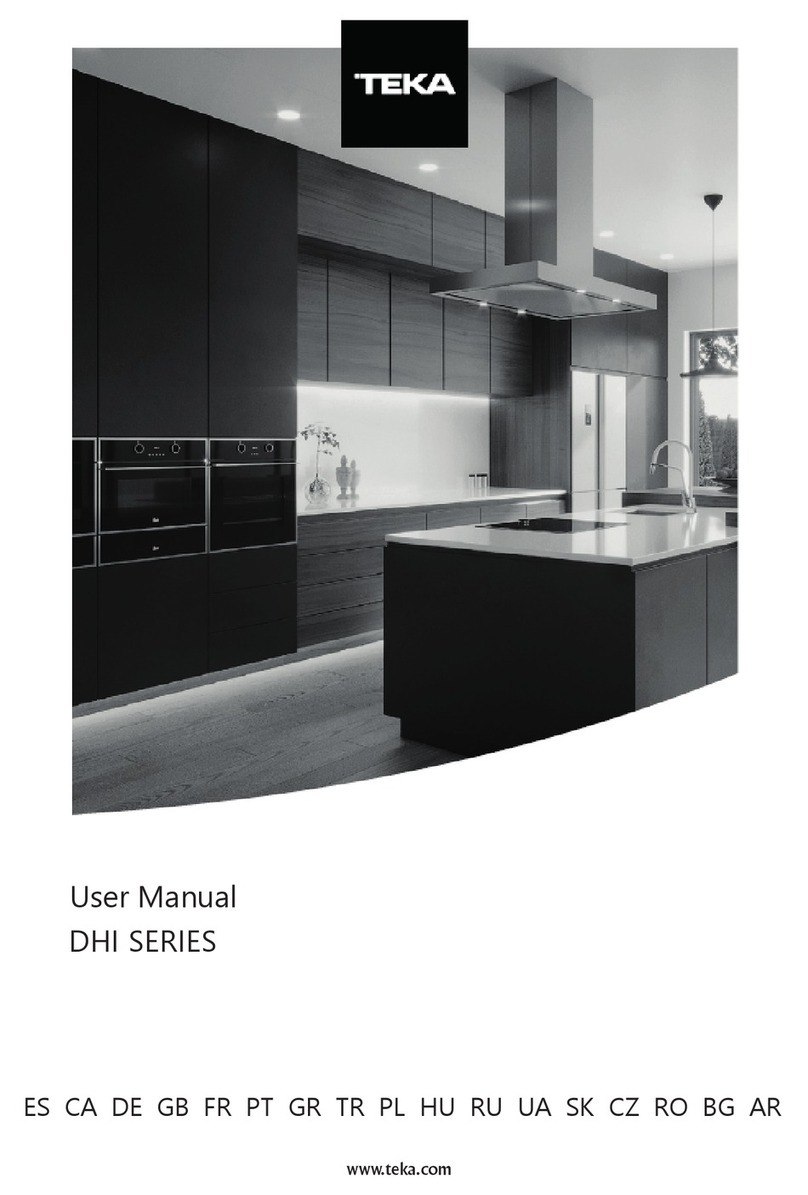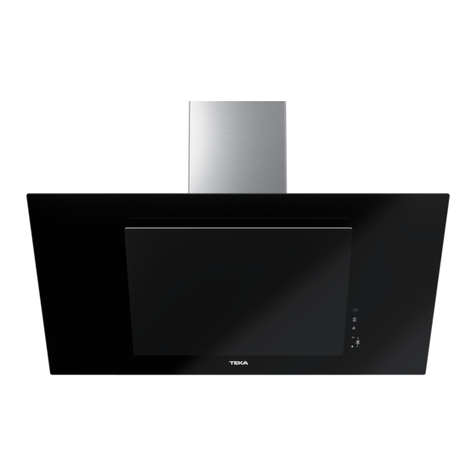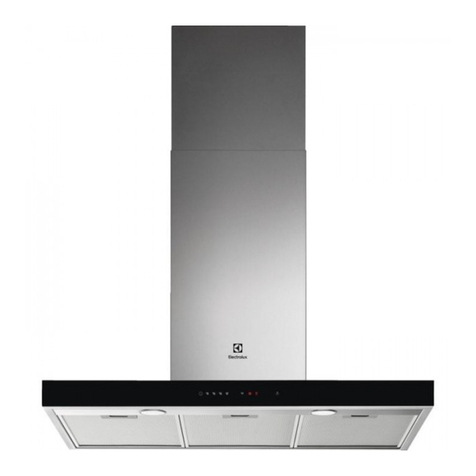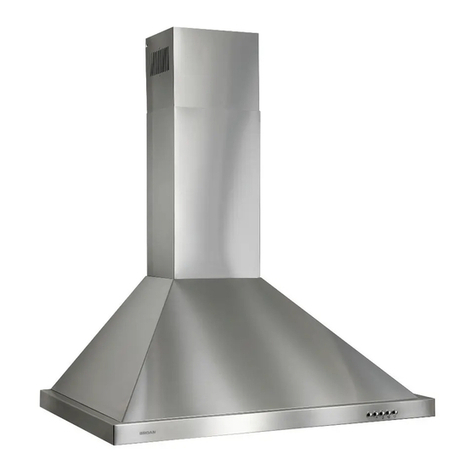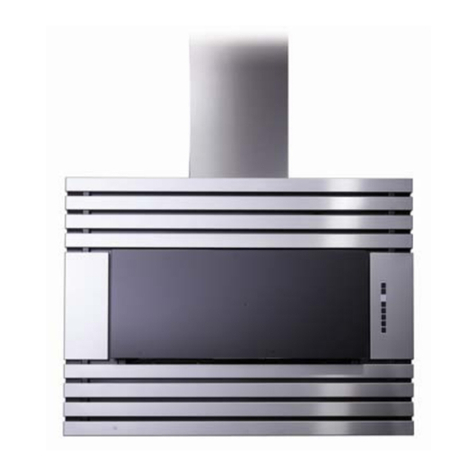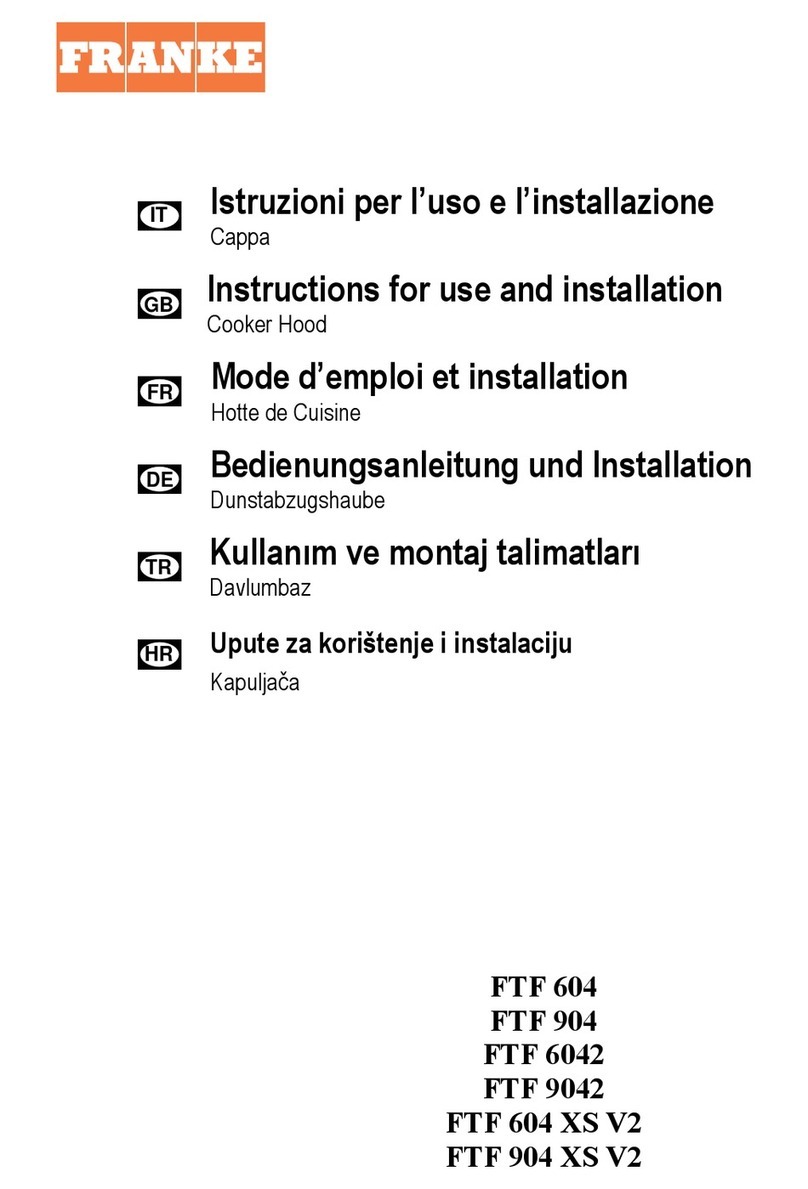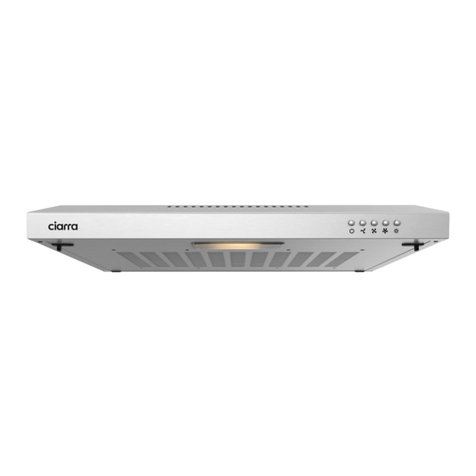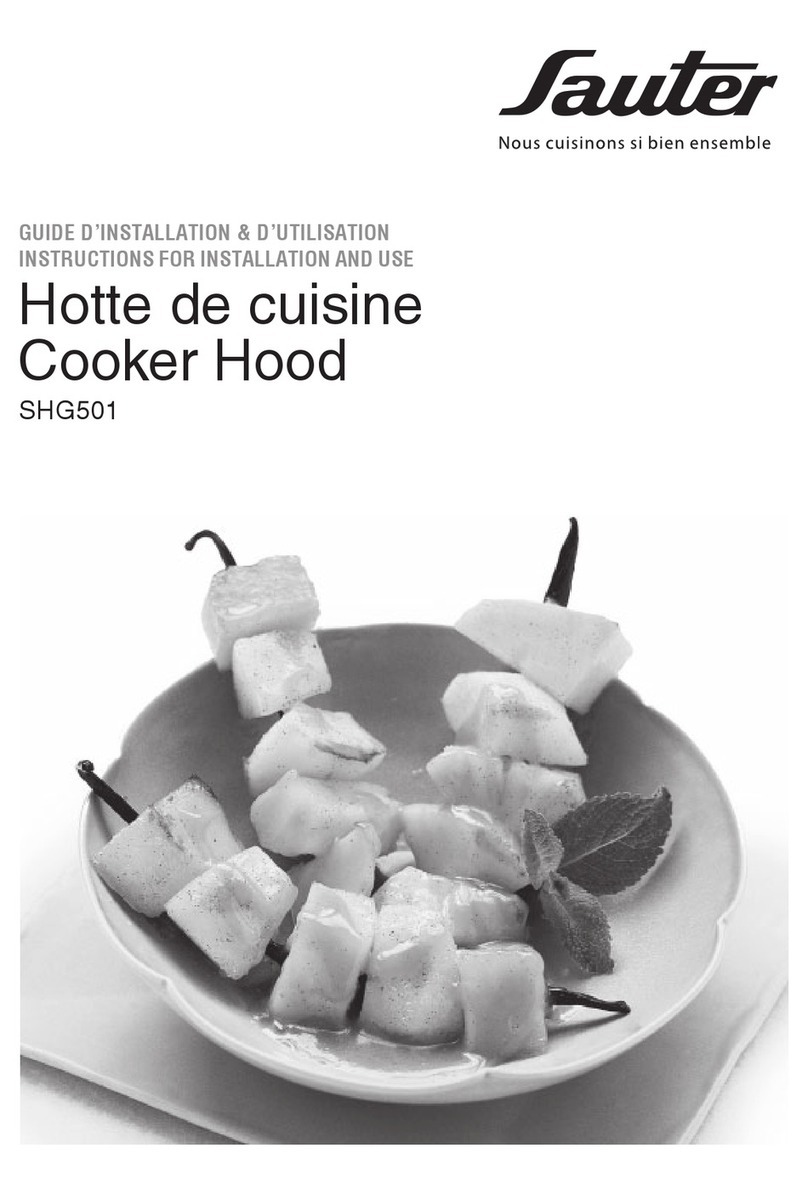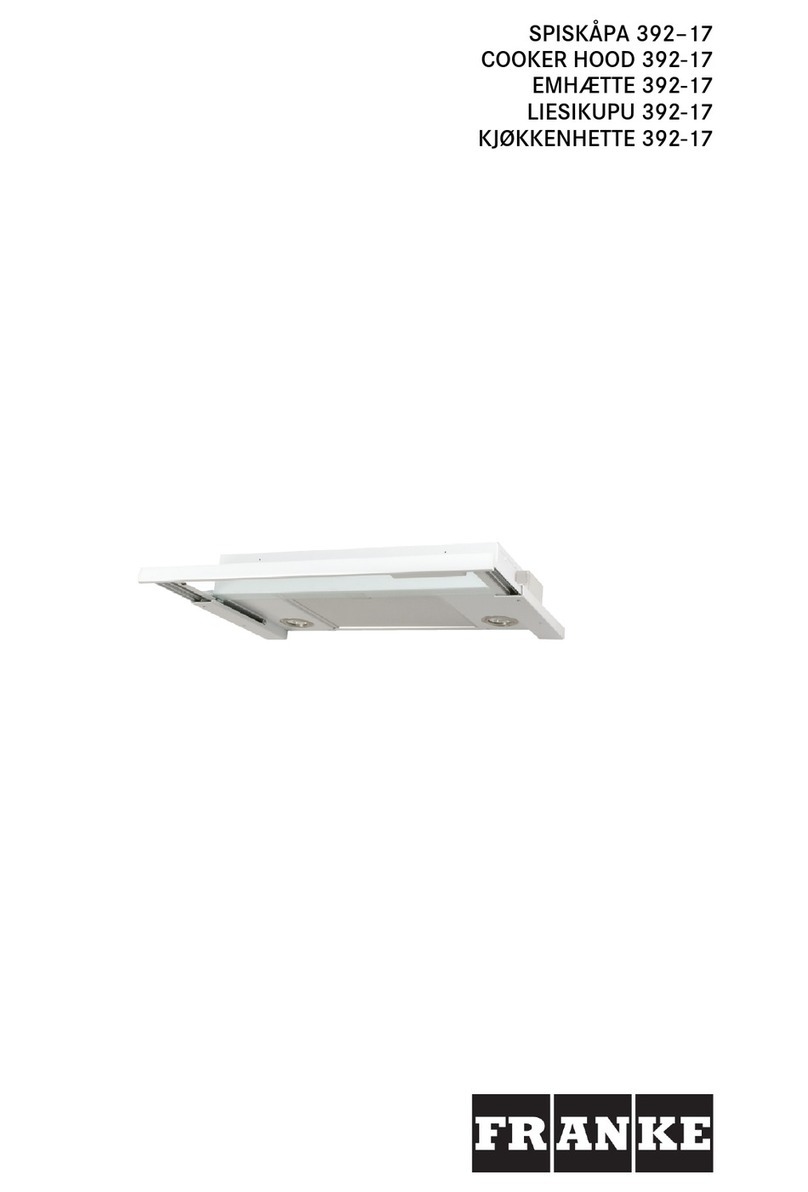-
AMando del motor que permite seleccionar
3 velocidades diferentes o desconectar
cualquiera de ellas.
Baja
Alta
Intensiva
BInterruptor de luces independiente del
funcionamiento de los motores.
CIluminación mediante una lámpara LED.
DFiltro situado sobre la zona de cocción,
fácilmente extraible para su lavado.
EMarco y soporte del filtro.
FPosibilidad de incorporar filtros de carbón
activo (Fig.2)
G-H Aletas anti-retorno que se colocarán en la
boca de salida, situando sus extremos en
los orificios dispuestos para ello (Fig. 2).
figura 1 podrá controlar las funciones de la
campana
Para conseguir una mejor aspiración le
recomendamos poner en funcionamiento la
campana unos minutos antes de cocinar
(entre 3 y 5 minutos) para que el flujo de aire
sea continuo y estable al momento de aspirar
los humos.
De igual modo, mantenga la campana
funcionando unos minutos después de
cocinar para el total arrastre de humos y
olores al exterior.
Antes de efectuar cualquier operación de
limpieza y mantenimiento, asegúrese que el
aparato está desconectado de la red.
Para realizar labores de limpieza y
mantenimiento, cumpla con las Instrucciones
de Seguridad.
Existe riesgo de incendio en caso de que la
limpieza no se efectúe conforme a las
instrucciones.
Limpieza del filtro
Para extraer los filtros de sus alojamientos
actúe sobre los dispositivos de enclavamiento.
Proceda a su limpieza, bien introduciéndolo en
el lavavajillas, (ver observaciones) o dejándolo
sumergido en agua caliente el tiempo
necesario para facilitar la eliminación de
grasas, o si lo desea, mediante el uso de
sprays específicos (protegiendo las partes no
metálicas). Finalizada la limpieza proceda a su
secado.
Para reemplazar los filtros, proceda de manera
opuesta a su remoción. Asegúrese de que el
filtro esté bien cerrado en la carcasa para
evitar caídas intempestivas del filtro.
Observaciones: La limpieza en lavavajillas con
detergentes agresivos, puede ennegrecer la
superficie metálica sin que afecte a su
capacidad de retención de grasas.
Atención: La limpieza de filtros debe
efectuarse, como mínimo una vez al mes,
dependiendo de la utilización de la campana.
Se debe tener en cuenta que al cocinar hay
deposición de grasas en la campana y en el
filtro aunque aquella no se ponga en
funcionamiento.
Limpieza del cuerpo de la campana
Se recomienda la utilización de agua
jabonosa, a 40ºC aproximadamente. Se
utilizará un paño humedecido en dicha agua
para la limpieza de la campana, incidiendo
especialmente en las rendijas. Posteriormente
se secará utilizando un paño que no
desprenda pilosidades.
